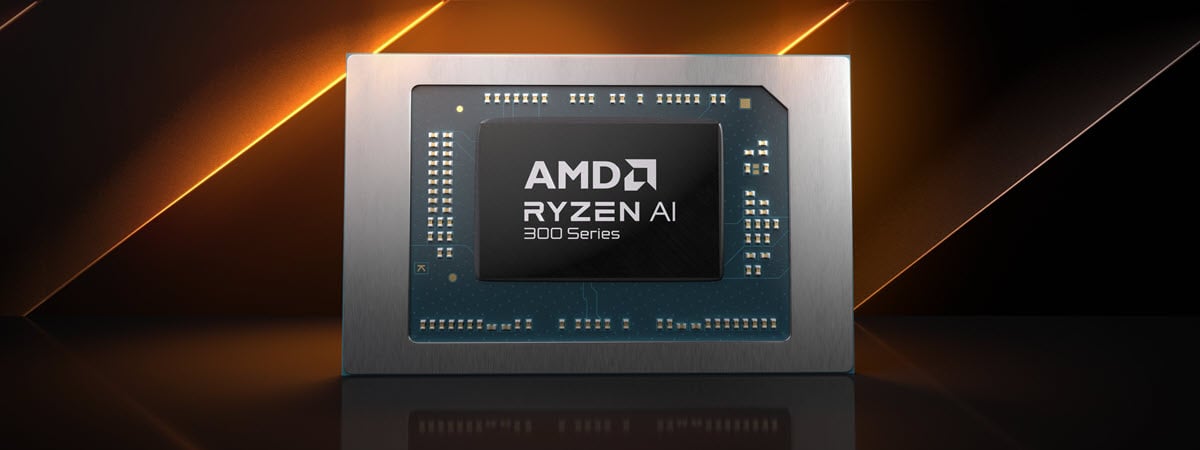
While working on a book project, I made a surprising discovery: Windows 11 on ARM processors is missing several key features present in its x64 counterpart despite both versions running the latest 24H2 update. This revelation comes from a detailed comparison I’ve made between two ASUS laptops: one with a Qualcomm Snapdragon processor and another powered by an AMD Ryzen AI. My investigation uncovered the absence of features like File History and Work Folders on the ARM version of Windows 11 and numerous other missing functionalities. These findings raise important questions about the feature parity between ARM and x64 versions of Windows 11, potentially influencing consumer and business decisions regarding ARM-based Windows devices:
The laptops I’ve used for comparison
I’ve been using two laptops in parallel: an ASUS Vivobook S 15 (which features a Qualcomm Snapdragon X Elite X1E78100 processor) and an ASUS Zenbook S 16 (powered by AMD Ryzen AI 9 HX 370). Both have the same Windows 11 2024 Update (version 24H2), Build 26100, the latest available when I finalized my research and started drafting this article, on September 1st, 2024.

Details about the laptops I've used for my research
As you can see in the screenshot above, both laptops are using Windows 11 Pro.
File History is missing from Windows 11 on ARM
I am one of those users who loves having a local backup of their files and folders. Therefore, I have an external SSD connected to my desktop computer with File History turned on, automatically backing up my data in the background. I wouldn’t have thought of running this app on a laptop because I use it on my main PC, and Windows 11 24H2 isn’t yet available on existing desktop PCs. However, I am writing the second edition of my book, Windows 11 All-in-One For Dummies, and luckily, I needed to update the chapter that offers advice on how to back up your data with File History. I searched for this app on the ASUS Vivobook S 15, and Windows 11 didn’t return the expected result. I thought Microsoft may have deprecated it, but I somehow skipped the news on this topic.

Searching for File History in Windows 11 on ARM returns no results
Distraught, I repeated the same search on the ASUS Zenbook S 16, and lo and behold: File History was there, alive and kicking, as usual. Both laptops had the same version of Windows, the same build, etc.

However, File History is still part of Windows 11 version 24H2
I looked for news about Microsoft deprecating File History and found nothing. I even searched for discussions on the Feedback Hub. Again, nothing. I also looked at which Windows features I had turned off on both laptops. Again, nothing. On the ASUS Vivobook S 15, there was no trace of File History. Can this be a sign that Microsoft is deprecating this feature but has not yet documented this anywhere?
Work Folders is not working in Windows 11 on ARM
Since the only important difference between the two laptops I’m using is their hardware architecture, this finding led me to believe that Microsoft may have removed other Windows features from Windows 11 on ARM. So, I opened the Control Panel on both laptops and tried to identify other differences. The first one I’ve noticed: Work Folders is also removed from Windows 11 on ARM, even though in the Control Panel, you find a shortcut for it, named ECS.

Work Folders is renamed to ECS in Windows 11 on ARM
However, if you click on it, you get an Unspecified error 0x8004005.

Work Folders doesn't run in Windows 11 on ARM
For those who don’t know, Work Folders is a Windows feature that allows users to sync data from their corporate network to their personal devices. With Work Folders, users can store and access work files across personal and corporate devices, providing convenient file storage and remote access. Organizations benefit from centralized file management on their servers and can implement device policies like encryption and lock-screen passwords, helping maintain control over corporate data in bring-your-own-device (BYOD) environments.
Windows 11 on ARM lacks this feature, making it a poor choice for people working in companies with BYOD policies.
Two more missing features from Windows 11 on ARM
These two findings motivated me to continue looking for differences between Windows 11 version 24H2 on ARM vs. x64, and I found other missing features. For example, in the Control Panel, if you go to System and Security > Windows Tools, you notice that the iSCSI Initiator is gone from Windows 11 on ARM, while Mail (Microsoft Outlook) is missing from the User Accounts section.

Mail (Microsoft Outlook) is missing from Windows 11 on ARM
The iSCSI Initiator allows your Windows computer to communicate with external storage devices over a network or the internet and exchange data using the iSCSI protocol. The Mail (Microsoft Outlook) applet allows you to personalize Microsoft Outlook email profiles without hacking the Windows Registry. Since both are missing, they can’t be used in Windows 11 on ARM. However, Outlook users will have the option to edit their profiles from the app itself.
I continued my research using the Windows Features list that can be accessed from the Control Panel. There, too, I found two other missing features:
- Guarded Host - a feature that allows users to shield virtual machines from tampering and theft by malicious administrators and malware.
- Windows Identity Foundation 3.5 - a framework for building identity-aware apps and services for Windows, which can be useful to developers working on such apps.

Windows Identity Foundation 3.5 missing from Windows 11 on ARM
23 other optional features missing from Windows 11 on ARM
The last place where I decided to look for differences was the optional features list from the Settings app. I went to Settings > System> Optional features and noticed that Windows 11 on ARM reported 41 features available for installation, while the other Windows 11 laptop reported 64, leading to a total of 23 missing features.

Windows 11 on ARM offers 41 optional features vs 64 in Windows 11 on x64
I scrolled down the list and figured things out. Here’s what else is missing from Windows 11 on ARM:
- IrDA infrared
- RIP Listener
- RSAT: Active Directory Certificate Services Tools
- RSAT: Active Directory Domain Services and Lightweight Directory Services Tools
- RSAT: BitLocker Drive Encryption Administration Utilities
- RSAT: DHCP Server Tools
- RSAT: DNS Server Tools
- RSAT: Data Center Bridging LLDP Tools
- RSAT: Failover Clustering Tools
- RSAT: File Services Tools
- RSAT: Group Policy Management Tools
- RSAT: IP Address Management (IPAM) Client
- RSAT: Network Controller Management Tools
- RSAT: Network Load Balancing Tools
- RSAT: PowerShell module for Azure Stack HCI
- RSAT: Remote Access Management Tools
- RSAT: Remote Desktop Services Tools
- RSAT: Server Manager
- RSAT: Storage Migration Service Management Tools
- RSAT: Storage Replica Module for Windows PowerShell
- RSAT: System Insights Module for Windows PowerShell
- RSAT: Volume Activation Tools
- RSAT: Windows Server Update Service Tools
- Windows Fax and Scan
If you’re curious to learn more about each of them and what they do, I highly recommend this article, which explains everything: Windows Optional Features: What are they and what do they do?
In summary, Windows 11 on ARM can’t use infrared technology to send and receive files, communicate with routers using the RIPv1 protocol, or use a large number of Remote Server Administration Tools (RSAT), which are very useful in corporate environments. Last but not least, it doesn’t include the old Windows Fax and Scan app that some people use to send and receive faxed documents without having a fax machine.
Some of these features, like IrDA infrared, RIP Listener, and Windows Fax and Scan, have been deprecated, and it is not surprising that they’re not available on ARM laptops with Windows 11. However, not being able to install the RSAT features from the Settings app can be problematic for some business users.
Why has Microsoft not communicated about this feature disparity?
Microsoft has invested significant effort in promoting Windows 11 on ARM, highlighting its excellent battery life, performance, and exclusive Copilot+ PC features, initially available only on ARM-based laptops. However, the company has been notably silent about the feature gaps compared to Windows 11 on x64. The absence of features like File History and Work Folders could be a drawback for some users and organizations. Moreover, the missing Remote Server Administration Tools (RSAT) and other enterprise-focused features may give pause to businesses considering a transition to ARM-based Windows 11 devices. If it wants Windows 11 on ARM to grow without generating unnecessary frustration for its users, Microsoft must do a better job of clearly communicating what its operating system can and cannot do. What do you think? Do you use any of the features missing from Windows 11 on ARM? Let me know your story in the comments below.


 02.09.2024
02.09.2024 


